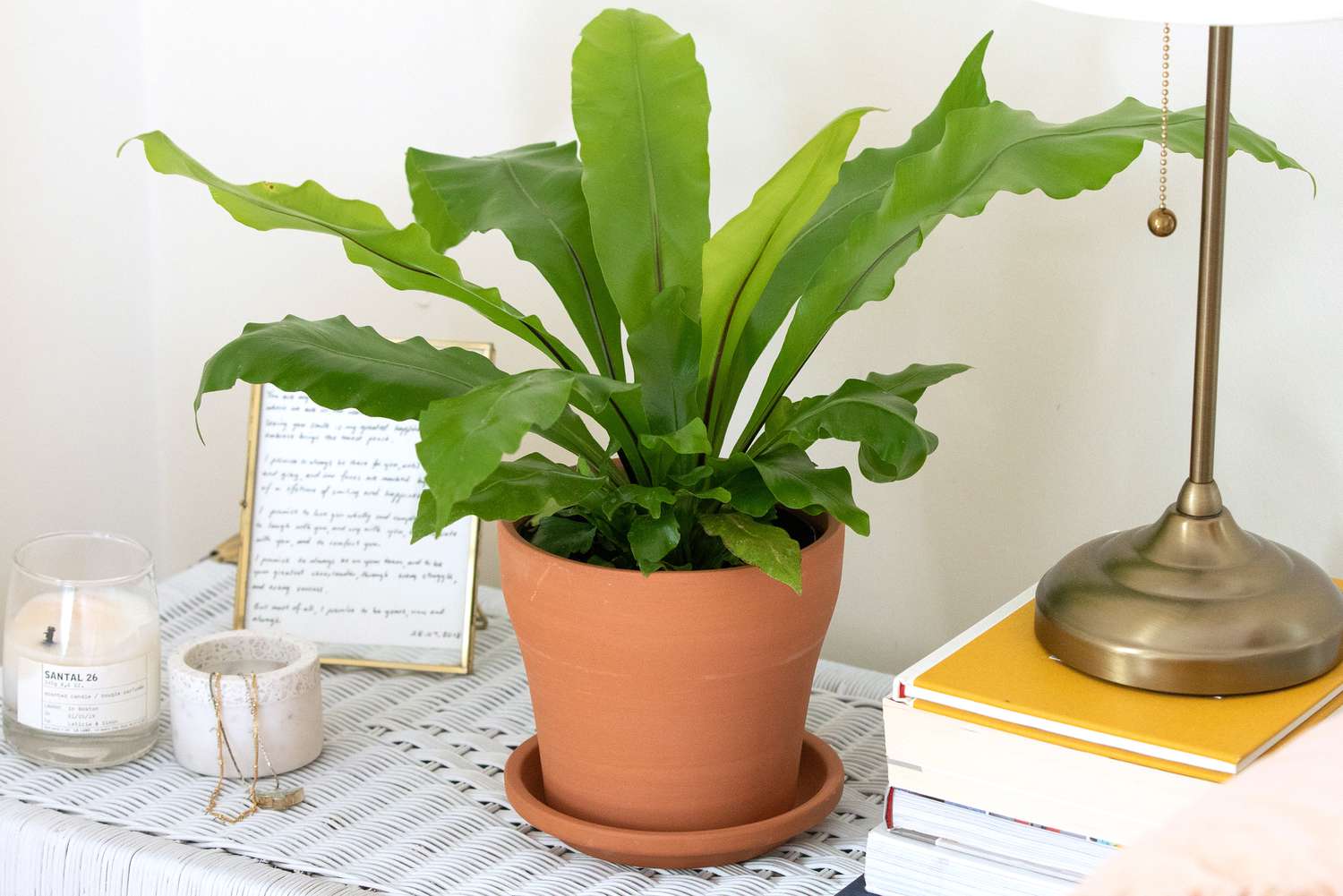
The Bird’s Nest Fern, scientifically known as Asplenium nidus, is a captivating plant that is popular among plant enthusiasts and collectors alike. With its stunning fronds that resemble a bird’s nest, this fern is not only visually appealing but also has fascinating characteristics that make it stand out in the world of plants.
In this article, we will uncover 19 fascinating facts about the Bird’s Nest Fern that will surely pique your interest. From its unique growth habit to its preferred habitat and care requirements, we will delve into the intricacies of this beautiful fern. Whether you are a seasoned green thumb or just beginning your journey into the world of plants, you are guaranteed to learn something new and interesting about the Bird’s Nest Fern!
Key Takeaways:
- Bird’s Nest Ferns are low-maintenance, air-purifying plants that thrive in indirect sunlight and can add a tropical touch to indoor spaces, making them a perfect choice for homes and offices.
- These fascinating ferns, known for their lush foliage and natural decorations, are slow growers with air-purifying capabilities, making them safe and beautiful additions to any indoor or outdoor garden.
The Bird’s Nest Fern gets its name from its nest-like appearance.
The leaves of this fern grow in a circular pattern, resembling a bird’s nest, hence the name.
Bird’s Nest Ferns are epiphytes.
These ferns typically grow on other plants or trees, using them as support, but they do not harm or take nutrients from the host plant.
They are native to tropical regions.
Bird’s Nest Ferns are commonly found in tropical rainforests and are native to regions such as Southeast Asia, Australia, and Hawaii.
Their fronds can grow up to 3 feet in length.
The fronds of the Bird’s Nest Fern can reach impressive lengths, making it a visually striking plant.
Bird’s Nest Ferns are relatively low-maintenance.
These ferns are known for their resilience and ability to adapt to a variety of growing conditions, making them a popular choice for indoor and outdoor gardens.
They prefer indirect sunlight.
Although they can tolerate some sunlight, Bird’s Nest Ferns thrive in shaded or partially shaded areas, making them ideal for areas with filtered light.
Bird’s Nest Ferns have natural air-purifying capabilities.
These ferns can help improve indoor air quality by filtering out toxins and pollutants, making them a great addition to any home or office space.
They require well-draining soil.
To thrive, Bird’s Nest Ferns need soil that allows excess water to drain freely, preventing root rot and other moisture-related issues.
Bird’s Nest Ferns can be propagated through spores.
By collecting mature spores from the underside of the fronds and planting them in a suitable growing medium, you can successfully propagate these ferns.
They are non-toxic to pets.
If you have furry friends at home, you can rest assured that Bird’s Nest Ferns are safe for them to be around, as they are non-toxic to cats and dogs.
Bird’s Nest Ferns have been used medicinally.
In traditional medicine, extracts from Bird’s Nest Ferns have been used to treat various ailments, including coughs, wounds, and respiratory conditions.
They have distinct frond variations.
Depending on the species and growing conditions, Bird’s Nest Ferns can have fronds with different shapes, sizes, and textures, adding to their visual appeal.
Bird’s Nest Ferns can survive in high humidity.
These ferns thrive in environments with high humidity levels, making them an excellent choice for bathrooms or tropical gardens.
They are excellent natural decorations.
With their lush green foliage and unique shape, Bird’s Nest Ferns make beautiful natural decorations for homes, offices, and events.
Bird’s Nest Ferns are slow growers.
It can take several years for these ferns to reach their full size, but their gradual growth makes them all the more rewarding to care for.
They can be grown in pots or mounted on driftwood.
Bird’s Nest Ferns can be potted using well-draining soil or attached to driftwood for a more naturalistic display in vivariums or terrariums.
They belong to the Asplenium genus.
The Bird’s Nest Fern is classified under the Asplenium genus, which consists of hundreds of fern species worldwide.
They are a symbol of lushness and prosperity.
In some cultures, Bird’s Nest Ferns are considered symbols of abundance, fertility, and good fortune.
Bird’s Nest Ferns can add a tropical touch to indoor spaces.
With their tropical origins and unique appearance, these ferns can instantly transform any indoor area into a lush and vibrant oasis.
Conclusion
Bird’s Nest Fern is a truly remarkable plant with numerous fascinating qualities. Its unique growth pattern, environmental adaptability, and symbiotic relationship with birds make it a captivating addition to any garden or indoor space. With its lush foliage and easy care requirements, the Bird’s Nest Fern is not only visually appealing but also a perfect choice for novice plant enthusiasts. Whether you’re a fan of nature’s wonders or simply looking to add some greenery to your surroundings, the Bird’s Nest Fern is sure to impress with its stunning features and intriguing characteristics.
FAQs
1. How often should I water my Bird’s Nest Fern?
Bird’s Nest Ferns prefer consistently moist soil but can be sensitive to overwatering. It is advisable to water them once the top inch of soil feels dry to the touch.
2. Can I keep a Bird’s Nest Fern indoors?
Absolutely! Bird’s Nest Ferns are well-suited for indoor environments as long as they receive indirect light and proper humidity levels. They can add a touch of tropical elegance to your home or office.
3. Does the Bird’s Nest Fern require any special fertilizers?
While not necessary, you can use a balanced liquid fertilizer during the growing season to enhance the plant’s health and promote lush foliage. Be sure to dilute the fertilizer as per the manufacturer’s instructions.
4. How often should I repot my Bird’s Nest Fern?
Bird’s Nest Ferns are slow-growers and generally do not require frequent repotting. Repotting every 2-3 years, or when the plant becomes root-bound, is sufficient to provide it with enough space to grow.
5. Can I propagate my Bird’s Nest Fern?
Yes, Bird’s Nest Ferns can be propagated through division. Simply divide the plant into smaller sections, ensuring that each section has sufficient roots and foliage. Plant the divisions in separate pots and provide them with the same care as the parent plant.
If you're fascinated by the world of plants, why not explore more captivating facts about our leafy friends? Discover the joys of caring for houseplants, learn how to create your own indoor gardening oasis, and uncover the secrets of exotic tropical plants like the bromeliad. From the practical to the whimsical, there's always more to learn about the incredible plants that share our homes and enrich our lives.
Was this page helpful?
Our commitment to delivering trustworthy and engaging content is at the heart of what we do. Each fact on our site is contributed by real users like you, bringing a wealth of diverse insights and information. To ensure the highest standards of accuracy and reliability, our dedicated editors meticulously review each submission. This process guarantees that the facts we share are not only fascinating but also credible. Trust in our commitment to quality and authenticity as you explore and learn with us.


